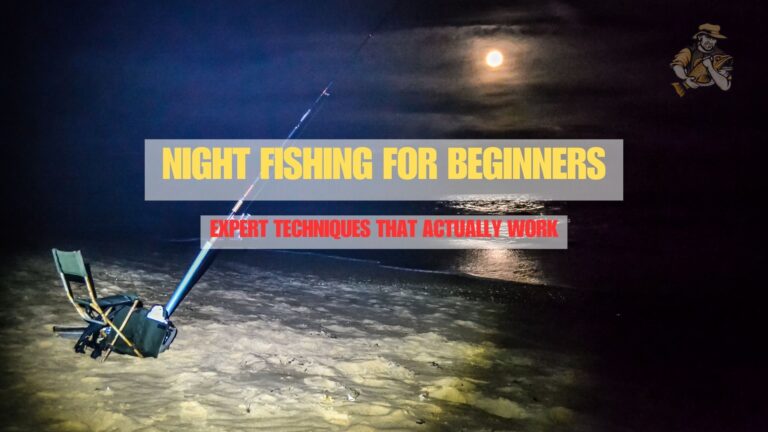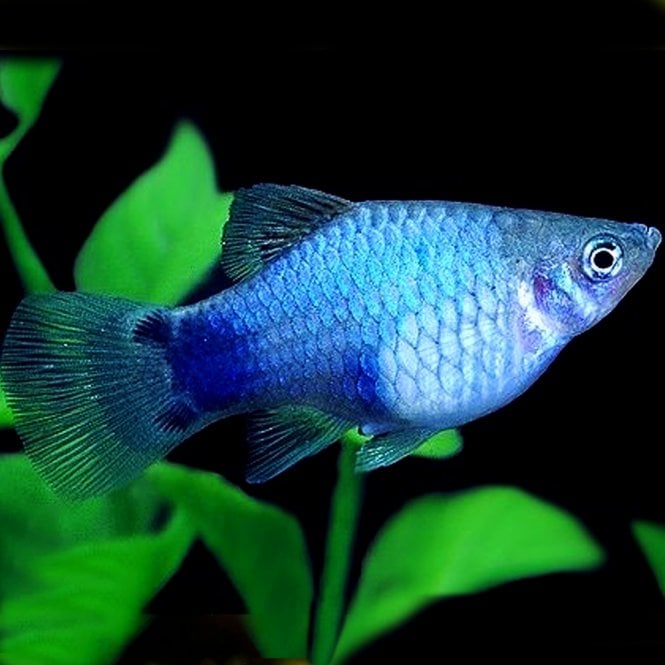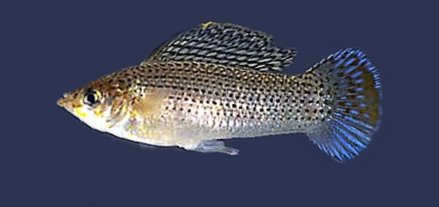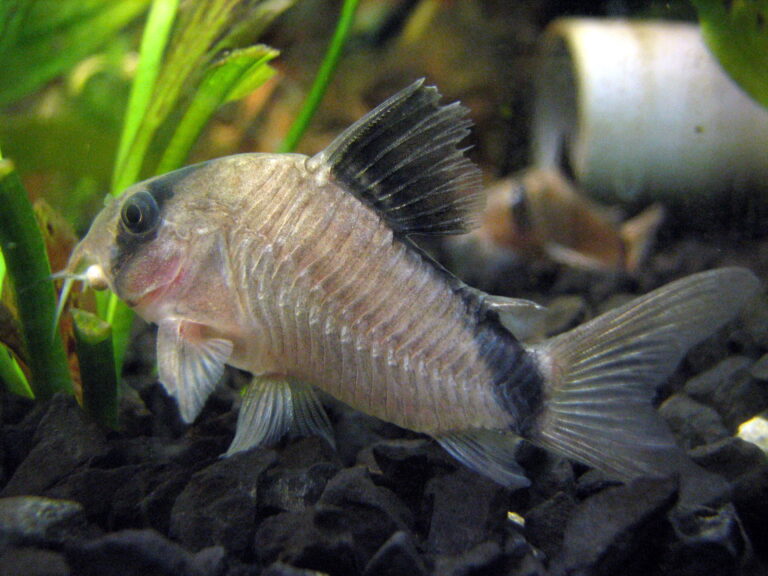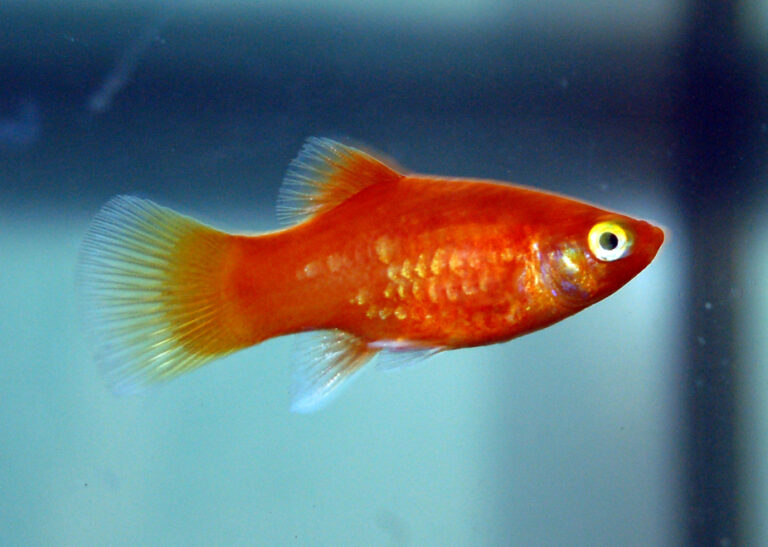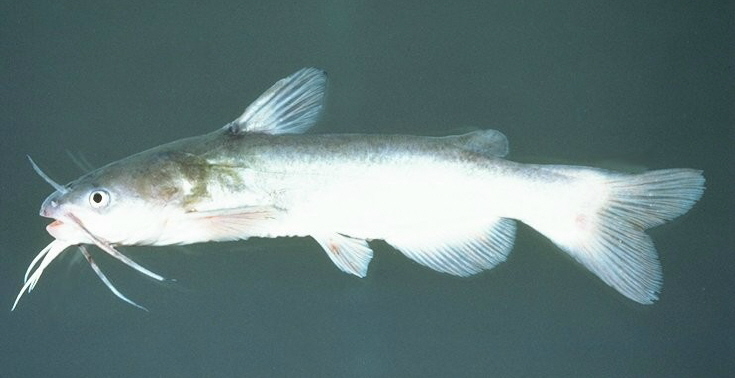King Mackerel Fishing: Top Strategies for Landing Smokers
By Adam Hawthorne | Last Modified: May 3, 2025
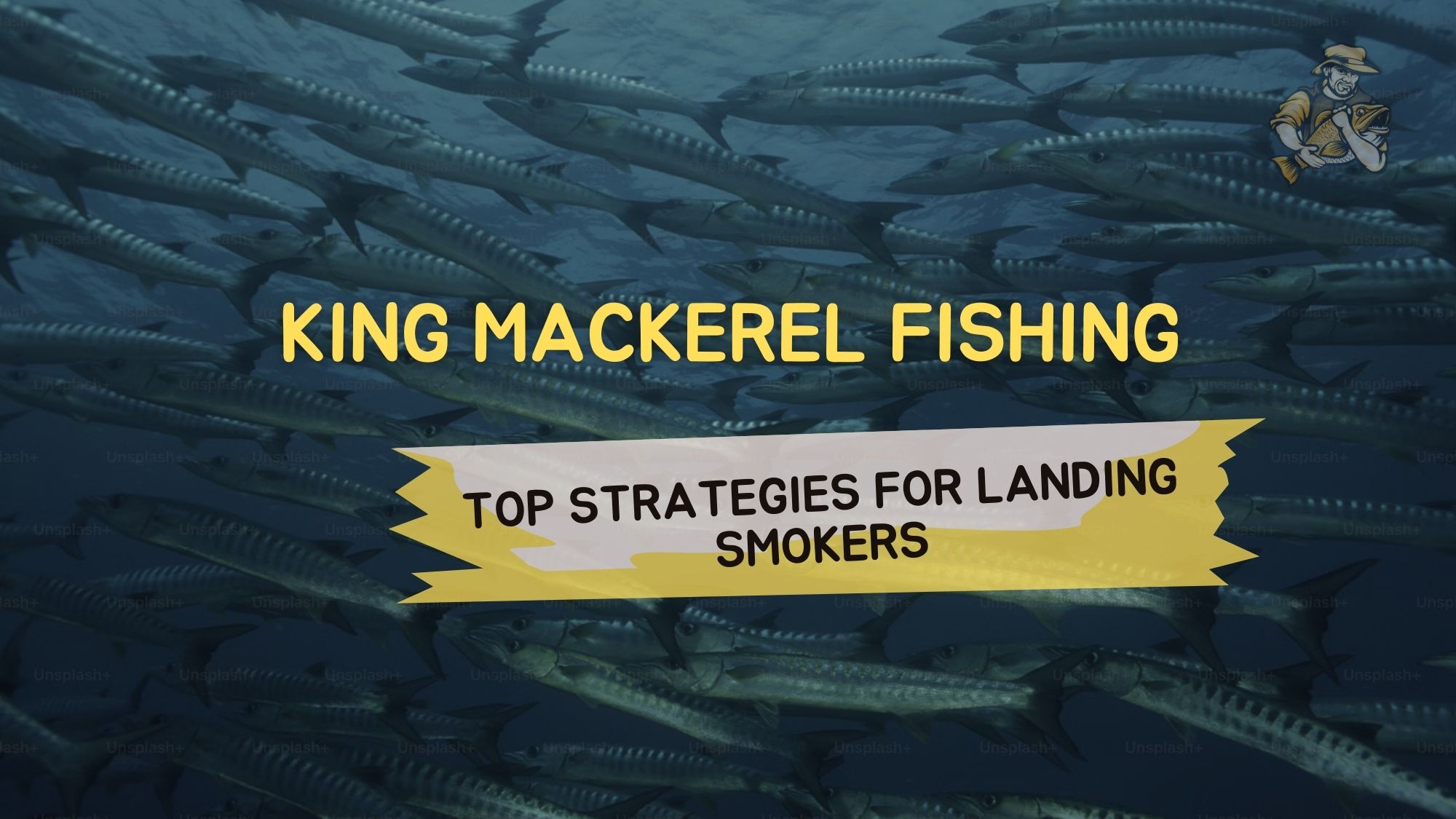
Some days on the water just stick with you. Few things compare to that first time a king mackerel nearly spools your reel – that screaming drag sound still rings in my ears years later. These “smokers” (named for how they make your drag smoke when they run) have humbled plenty of anglers, myself included.
After 30+ years chasing these toothy speedsters across various coastlines, I’ve learned a few things the hard way. While I’m primarily a freshwater guy from Michigan, my annual trips to the Gulf Coast and Atlantic have given me an appreciation for these lightning-fast predators.
Understanding King Mackerel Behavior
King mackerel (Scomberomorus cavalla) are pelagic speedsters that can reach speeds over 40 mph. These fish migrate seasonally along the Atlantic and Gulf coasts, following bait and water temperatures.
Kings typically prefer water temps between 68°F and 76°F. During summer, they move northward along the coast, while in winter they retreat south to warmer waters. This migration pattern makes timing crucial for successful king mackerel fishing.
I’ve found that understanding their movement patterns has made the biggest difference in my success rates. Kings are primarily sight hunters with exceptional vision, which affects how you should present your baits. They’re also structure-oriented, often holding near reefs, wrecks, and bait-holding areas.
Adult kings feed primarily on smaller fish like menhaden, mullet, herring, and squid. Their preferred prey varies by region and season, something I didn’t appreciate fully until a local captain in Florida pointed it out to me.
The size of kings varies dramatically by region and season. “Snakes” (smaller kings under 10 pounds) often travel in schools, while trophy “smokers” (20+ pounds) tend to be more solitary. Some trophy kings exceed 50 pounds, and the current world record stands at an impressive 93 pounds, caught off Florida.
According to the Gulf of Mexico Fishery Management Council, king mackerel populations have remained relatively stable over recent years, with seasonal regulations varying by region.
Essential King Mackerel Gear
Let’s talk about what you’ll need to land these silver missiles. I’ve used everything from basic setups to specialized gear over the years, and here’s what I’ve found works best.
Rods and Reels
For kings, you’ll want a medium to medium-heavy spinning or conventional rod in the 15-30 pound class, typically 7 to 8 feet in length. I prefer rods with a moderate to fast action that offers some give when a king strikes but enough backbone to fight effectively.
For reels, you need something with a smooth drag system that can handle those blistering runs. A quality spinning reel in the 5000-8000 size range or a conventional reel capable of holding 300+ yards of 15-20 lb test works well.
I learned this one the hard way during a trip to Key West. I’d brought my standard freshwater bass setup, and the first decent king I hooked completely spooled me in seconds. My buddy still gives me grief about that.
Line and Leaders
Line choice is critical for king mackerel. Most anglers use:
- 15-20 lb monofilament (good stretch properties)
- 20-30 lb braided line (better sensitivity and line capacity)
I typically run 30 lb braid with a 20 lb fluorocarbon topshot of about 20-30 feet. This gives me the sensitivity of braid with the stretch of mono when a king hits.
Leaders are absolutely non-negotiable with kings. Their razor-sharp teeth will slice through monofilament like it’s nothing. Wire leaders are standard, with single-strand wire (30-40 lb test) being most common. Some anglers prefer seven-strand cable for its flexibility, but I’ve had good success with simple single-strand wire in the 40 lb range.
The mistake many beginners make is using leaders that are too short. A minimum of 12 inches is recommended, though I typically use 18-24 inch leaders. And always check your leader after each fish – kings can fray or kink wire with their violent headshakes.
Hooks and Terminal Tackle
For king mackerel, I prefer:
- #4 to 2/0 treble hooks for stinger rigs
- 5/0 to 7/0 single hooks for live bait rigs
- Small swivels rated for at least 50 lbs
- Trolling weights (1-3 oz) for getting baits deeper
One thing that took me years to get right was the stinger rig setup. I finally got some hands-on guidance from a charter captain in Alabama who showed me how to properly position the stinger hook to maximize hookups without hindering the bait’s movement.
Research from the Florida Fish and Wildlife Conservation Commission suggests using circle hooks when possible to reduce gut-hooking and increase survival rates for released fish, particularly important for undersized kings.
Proven King Mackerel Fishing Techniques
Kings can be caught using several methods, and I’ve had success with most of them over the years. The key is matching your approach to conditions and local bait preferences.
Slow Trolling with Live Bait
This is hands-down my favorite technique for trophy kings. Nothing beats the thrill of a smoker king blasting a live bait on the surface.
The process is straightforward:
- Catch or purchase live baits (blue runners, menhaden, mullet, threadfin herring)
- Rig them on a stinger setup
- Slow troll at 1-2 knots
- Position baits at different depths
- Pay attention to water changes, structure, and bird activity
I remember one morning off Panama City when we were slow trolling some big blue runners. The water was calm, almost glassy. We weren’t marking much on the finder when suddenly one of our baits got nervous. Seconds later, a king that must have gone 40+ pounds skyrocketed on the bait. It was one of the most spectacular strikes I’ve ever witnessed.
The key with slow trolling is keeping your baits lively and at the right depth. I’ll often run one bait near the surface, one mid-depth, and another deeper until I find where the kings are holding.
High-Speed Trolling
When covering water is the priority, high-speed trolling with artificial lures can be highly effective. This technique involves:
- Trolling at 7-12 knots
- Using spoons, plugs, or sea witches with strip baits
- Staggering baits at different distances behind the boat
- Focusing on depth changes, temperature breaks, and structure
I typically deploy a spread of 4-6 lines when high-speed trolling. My go-to lures include Drone spoons, Rapala X-Raps, and sea witch/ballyhoo combinations.
What I’ve found interesting is how king preferences for trolling speed vary by region. In the Florida Panhandle, kings seem to prefer a faster presentation (9-10 knots), while in the Carolinas, a slightly slower speed (6-8 knots) often produces better results.
Drift Fishing
On days when the wind and current are working together, drift fishing can be incredibly productive. I’ll set up a drift along a productive area and:
- Deploy live baits at various depths
- Add a small weight if needed to keep baits in the strike zone
- Use a sea anchor if drifting too quickly
- Re-position and start a new drift when reaching the end of a productive area
The natural presentation of drift fishing can be deadly on pressured fish. During a trip to Clearwater, Florida, we were struggling to get strikes while trolling. Switching to a drift approach with the same baits produced immediate results, including a 36-pound king that took a threadfin herring suspended under a balloon.
Anchored Fishing
When kings are concentrated around specific structure, anchoring and creating a chum slick can be deadly effective. This approach involves:
- Anchoring up-current from the structure
- Establishing a steady chum slick
- Deploying baits at varying depths in the chum line
- Being patient as the slick develops
This technique shines in the Florida Keys and other areas with strong currents. The chum brings in baitfish, which in turn attract the kings. I’ve had days where we caught dozens of kings from a single anchored position by maintaining a consistent chum slick.
One key tip I’ve learned from commercial fishermen – vary your bait presentations when anchored. Sometimes kings want a bait right in the chum, other times they prefer offerings on the edges of the slick.
Finding King Mackerel Hotspots
Finding kings often means finding the right combination of structure, bait, and water conditions. Here are some proven spots to focus your efforts:
Man-made Structure
Reefs, wrecks, and oil rigs are king mackerel magnets, especially when they hold bait. These structures create upwellings and current breaks that concentrate baitfish.
My best day ever for king mackerel came on a small artificial reef about 12 miles offshore from Pensacola. The reef was nothing special – just some concrete culverts and an old barge – but it held an incredible concentration of baitfish and, consequently, some monster kings.
According to research published in the North American Journal of Fisheries Management, artificial reefs significantly increase king mackerel habitat quality in the Gulf of Mexico.
Natural Structure and Bottom Changes
Kings often patrol areas where the bottom contour changes dramatically:
- Edges of shipping channels
- Dropoffs and ledges
- The intersection of different bottom compositions
In the Carolinas, I’ve found that kings often concentrate along the edges of shoals and sloughs, especially where these features intersect with current rips.
Bait Concentrations
Perhaps the most reliable indicator of king mackerel presence is concentrated baitfish. Look for:
- Diving birds
- Bait balls on the surface
- Bait schools on your fish finder
- Areas where multiple smaller predators are feeding
My fishing buddy Finn (not my dog, an actual human friend with the same name) taught me to always watch for bird activity, especially terns and gulls diving consistently in one area. This has led us to more kings than any other indicator.
Water Conditions
King mackerel prefer clean, clear water in that 68°F-76°F sweet spot. Key areas to target include:
- Water color changes
- Rip lines and tide lines
- Temperature breaks
- Edges of murky water (not in it)
I’ve noticed that kings often concentrate along the edges where cleaner offshore water meets slightly dirtier inshore water. These color changes concentrate bait and create perfect ambush points for predators like kings.
Seasonal King Mackerel Patterns
Understanding seasonal movements can dramatically increase your success. While local patterns vary, here’s a general guide:
Spring (March-May)
Kings begin their northward migration as water temps climb above 68°F. This is when the first wave of kings arrives along the Florida Panhandle and gradually moves up the Atlantic coast.
Spring kings are often actively feeding after winter and can be aggressive. Focus on areas 5-15 miles offshore where bait schools are concentrated.
During a late April trip to Gulf Shores a few years back, we found an early push of kings ravaging massive schools of Spanish sardines just 7 miles offshore. The action was non-stop for three days straight.
Summer (June-August)
By summer, kings have typically reached their northward migration point and can be found from the Carolinas up to the Chesapeake Bay on the Atlantic side, and throughout the northern Gulf.
Summer fish often move slightly deeper to find optimal water temperatures, especially during midday heat. Dawn and dusk fishing becomes increasingly productive.
I remember one particularly hot August day off the Outer Banks when surface temps hit 84°F by noon. We couldn’t buy a strike trolling the surface. But when we added planers to get our baits down to the thermocline at about 30 feet, we started catching quality kings consistently.
Fall (September-November)
Fall offers some of the best king mackerel fishing of the year as fish feed heavily before their southward migration. Bait schools are typically at their largest, and kings often go on feeding frenzies.
In many areas, fall brings “smoker” kings closer to shore as they follow migrating bait. This creates excellent opportunities for even small boat anglers.
A local fishing forum I follow called The Hull Truth often reports massive schools of fall kings along the beaches of Florida’s Emerald Coast, sometimes within a mile of shore.
Winter (December-February)
Most king mackerel retreat to southern Florida, the Keys, and offshore areas of the northern Gulf during winter months. The fish that remain are typically larger “smoker” specimens.
Winter kings often hold deeper and may require slower presentations. The upside is that winter fish tend to be larger on average than peak season fish.
During a January trip to the Florida Keys, we found kings holding in 80-100 feet of water over deep wrecks. While fewer in number, the average size was impressive, with most fish in the 25-35 pound class.
Fighting and Landing King Mackerel
When it comes to landing kings, technique matters more than brute strength. Here’s what I’ve learned works best:
- Let them run on that first blistering sprint
- Maintain steady pressure rather than pumping aggressively
- Keep the rod tip up to absorb sudden head shakes
- Be prepared for multiple runs, especially from larger fish
- Use a gaff for fish you plan to keep (be careful of those teeth!)
- Exercise extra caution when landing especially large kings
I learned the importance of proper drag settings through painful experience. On a trip to Key West, I had my drag set too tight when a monster king hit. Instead of letting the drag do its job, the fish put so much pressure on the knot that it failed. Since then, I always set my drag to about 25-30% of the line’s breaking strength when targeting kings.
Remember that kings have relatively soft mouths, and hooks can tear free if you apply too much pressure. Patience is key, especially with trophy fish.
Preparing Your Catch
King mackerel make excellent table fare when properly handled. Follow these steps for the best eating quality:
- Bleed the fish immediately by cutting the gills or tail
- Get the fish on ice as quickly as possible
- Clean the fish within a few hours of catching
- Remove the bloodline (the dark meat) which can have a strong flavor
- Portion the fillets for your intended cooking method
I personally prefer king mackerel steaks grilled with a simple olive oil, salt, pepper, and lemon preparation. The meat is rich in omega-3 fatty acids but can be on the oily side, which makes it excellent for smoking as well.
For larger kings (over 15 pounds), I often smoke portions of the fish. Smaller kings (under 10 pounds) tend to have milder meat that works well for almost any fish recipe.
According to seafood nutrition information from the Florida Department of Agriculture, king mackerel is highly nutritious but should be consumed in moderation by pregnant women and young children due to potential mercury content.
King Mackerel Fishing Mistakes to Avoid
Over the years, I’ve made plenty of mistakes while pursuing kings. Here are some common ones to avoid:
Using Inadequate Gear
I’ve seen too many anglers bring light tackle to a king mackerel fight. While you might land smaller “snake” kings on lighter gear, trophy-class smokers require appropriate equipment.
This reminds me of my first Gulf trip with my trusty bass gear. Not only did I get spooled, but I also lost several expensive lures in the process. Lesson learned the expensive way.
Poor Line Management
Kings are notorious for creating wind knots and tangles during their blistering runs. Always check your line before deploying baits, and be meticulous about line management when fighting a fish.
Missing the Signs
Too often, anglers focus solely on their electronics rather than reading the water. Kings give plenty of clues about their presence – from showering bait to slashing through the surface. Train yourself to notice these subtle signs.
Ignoring Water Clarity
Kings have exceptional vision and tend to avoid murky water. I’ve wasted entire days fishing in poor water conditions when cleaner water was available just a few miles away.
Fighting Fish Too Aggressively
The excitement of hooking a smoker king can lead to fighting them too hard. This often results in pulled hooks or broken leaders. Let the drag do its job, and be patient during the fight.
FAQ About King Mackerel Fishing
What’s the best time of day to catch king mackerel?
Dawn and dusk are typically prime times, but kings can be caught throughout the day under the right conditions. I’ve had my best success during the first few hours after sunrise and the last few hours before sunset. During summer months, the midday bite often slows considerably unless you can find kings holding deeper in cooler water.
What’s the difference between king mackerel and Spanish mackerel?
The most obvious differences are size and the lateral line. Kings get much larger (up to 90+ pounds) than Spanish mackerel (rarely over 10 pounds). Kings also have a lateral line that drops sharply behind the pectoral fin, while Spanish mackerel have a gradually sloping lateral line. Kings also typically have fewer and smaller spots than Spanish mackerel.
What size king mackerel is considered a “smoker”?
While definitions vary regionally, most anglers consider kings over 20 pounds to be entering “smoker” territory, with fish over 30 pounds being true trophy specimens. The name comes from how these large kings can make a drag system “smoke” during their powerful runs.
Can you catch king mackerel from shore?
Yes, though it’s less common than boat fishing. During certain seasons, particularly fall, kings will follow bait schools within casting distance of piers, jetties, and beaches. Pier fishing for kings is quite popular along the Florida Panhandle and parts of the Carolinas.
What’s the best bait for king mackerel?
Live baits generally outperform artificial lures for king mackerel. Blue runners, menhaden, mullet, threadfin herring, and cigar minnows are all excellent choices. The best bait often varies by region and season, matching what kings are naturally feeding on in the area.
How do you rig a live bait for king mackerel?
The standard approach is a stinger rig consisting of:
1- A lead hook through the bait’s nose or lips
2- A trailing “stinger” treble hook on a wire leader
3- The stinger hook either free-floating or lightly embedded in the bait’s back
This setup accounts for the king’s tendency to strike the middle or tail section of the bait.
What are king mackerel bag limits and size restrictions?
Regulations vary by region and can change. In federal waters of the Gulf of Mexico, the current recreational limit is 3 fish per person per day with a 24-inch fork length minimum size. Atlantic regulations allow 3 fish per person with a 23-inch fork length minimum. Always check with local authorities like NOAA Fisheries for current regulations before heading out.
Final Thoughts
King mackerel fishing combines technical challenge with explosive action in a way few other species can match. Whether you’re after numbers of smaller kings or holding out for a true smoker, the techniques above will help stack the odds in your favor.
I still remember that first 30+ pound king I caught off Destin years ago. Despite all the fishing I’ve done since then, across countless species and destinations, there’s still something special about the searing run of a big king that gets the adrenaline pumping like nothing else.
What started as an occasional pursuit during my Florida trips has become an annual pilgrimage – proof that these silver speedsters have a way of getting under your skin. Give king mackerel fishing a try, and you might just find yourself equally addicted to the challenge and thrill of landing these coastal missiles.
Remember to handle your catch responsibly, follow local regulations, and maybe keep a few smaller ones for the dinner table. The real trophy is the experience and the stories you’ll take home – whether you land that smoker king or it smokes your reel this time around.

Meet Adam Hawthorne
I’m a lifelong fishing enthusiast who’s spent years exploring rivers, lakes, and oceans with a rod in hand. At Fishing Titan, I share hands-on tips, honest gear reviews, and everything I’ve learned about fish and ocean life, so you can fish smarter and enjoy every cast.
Share:

Meet Adam Hawthorne
I’m a lifelong fishing enthusiast who’s spent years exploring rivers, lakes, and oceans with a rod in hand. At Fishing Titan, I share hands-on tips, honest gear reviews, and everything I’ve learned about fish and ocean life, so you can fish smarter and enjoy every cast.
Related Articles
-
Night Fishing for Beginners: Expert Techniques That Actually Work
My first night fishing trip was an absolute disaster. Picture this – fifteen-year-old me, armed with a rusty flashlight and my grandfather’s ancient tackle box,…
-
Blue Platy
The Blue Platy (Xiphophorus maculatus) stands as one of the most recognizable and culturally significant freshwater fish species in the aquarium trade. This small, vibrant…
-
Cardinal Tetra
The Cardinal Tetra (Paracheirodon axelrodi) stands as one of the most vibrant and sought-after freshwater aquarium fish in the world, captivating aquarists and marine biologists…
-
Sailfin Molly
The Sailfin Molly stands as one of the most distinctive freshwater fish species in both wild ecosystems and aquarium environments. Known scientifically as *Poecilia latipinna*,…
Fish Species
-
Corydoras Catfish
Corydoras catfish represent one of the most diverse and ecologically significant groups of freshwater bottom-dwelling fish in South American aquatic ecosystems. These small, armored catfish…
-
Dwarf Gourami
The Dwarf Gourami (Trichogaster lalius) stands as one of the most popular freshwater aquarium fish species, renowned for its vibrant coloration, peaceful temperament, and fascinating…
-
Coral Platy
The Coral Platy (Xiphophorus maculatus) represents one of the most recognizable and beloved freshwater aquarium fish in the world. This vibrant member of the Poeciliidae…
-
White Catfish
The White Catfish represents one of North America’s most adaptable freshwater species, serving as both an important commercial fish and a cornerstone species in countless…

